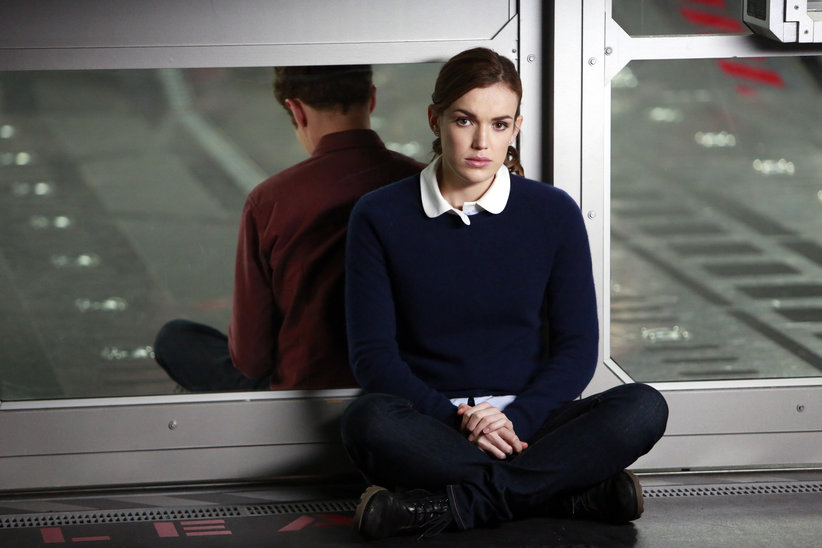Pakistani Sidhwa's third novel (The Bride, 1983; The Crown Eaters, 1982)written from the point of view of a young girl who's surrounded by the personal and political violence that accompanied the partitioning of India in 1947manages to do justice to the complexity of racial, ethnic, and religious violence in the era and to evoke the passage from an affluent childhood to the ambiguities of. Cracking India, Bapsi Sidhwa Perhaps more important than the chosen identity of a nation is the feeling of that nationthe traditions, histories, cultures, and religious identities of a nation become that nation, and together form a consensus of identity among its people. Cracking India is a novel in which heartbreak coexists with slapstick, where awful jokes about forefathers and foreskins give way to lines of glowing beauty (The moonlight settles like a layer of ashes over Lahore). The authors capacity for bringing an assortment of characters vividly to life is enviable. The 1947 Partition of India is the backdrop for this powerful novel, narrated by a precocious child who describes the brutal transition with chilling veracity. The novel's pervasive focus on embodiment, particularly eros and aggression communicated through the body, both figures the problem of the transformed national body. Bapsi Sidhwas Cracking India is a novel set in the context of the Partition of India in 1947, specifically in Lahore, a city of Punjab that suffered many riots and violence among Muslims, Hindus, and Sikhs, and that finally became part of Pakistan. Watch Queue Queue Cracking India is a keen perspective on individual and popular experiences during the partition of India in 1947. The story is written from the point of view of a young girl (called Lenny) who has access to the interactions of a variety of people from different ethnicities, classes, and religions during a period marked by immeasurable violence. Cracking India: A Novel [Bapsi Sidhwa on Amazon. FREE shipping on qualifying offers. The 1947 Partition of India is the backdrop for this powerful novel, narrated by a precocious child who describes the brutal transition with chilling veracity. [Bapsi Sidhwa As the young daughter of an affluent Parsee family in Lahore, Lenny is keenly observant of the city's astonishing diversity. Crippled by polio but lively in spirit, she spends many of her days in. The 1947 Partition of India is the backdrop for this powerful novel, narrated by a precocious child who describes the brutal transition with chilling veracity. Young Lenny Sethi is kept out of school because she suffers from polio. She spends her days with Ayah, her beautiful nanny, visiting with. Cracking India is widely admired in Asia and abroad. It was named a New York Times notable book for 1991. During the same year it received Germanys Liberatur Award, a. Books CRACKING INDIA Paperback: 296 pages Publisher: Milkweed Editions ISBN13: The 1947 Partition of India is the backdrop for this powerful novel, narrated by a precocious child who describes the brutal transition with chilling veracity. Cracking India comprises thirtytwo chapters and gives us a glimpse into the events of turmoil on the Indian subcontinent during partition. Historical truth is the backdrop of the novel. The partition has attracted the attention of quite a few novelists particularly in English. Cracking India Questions and Answers. The Question and Answer section for Cracking India is a great resource to ask questions, find answers, and discuss the novel. Ask Your Own Question Get cracking india a novel PDF file for free from our online library PDF File: cracking india a novel Here is the access Download Page of CRACKING INDIA A NOVEL PDF, click this link to download or Cracking India Homework Help Questions. What is the relevance of the title, IceCandyMan? Sidhwa's title carries significance in both the novel and the thematic applications of it. Find helpful customer reviews and review ratings for Cracking India: A Novel at Amazon. Read honest and unbiased product reviews from our users. Cracking India Cracking India is a novel that is based on acts of violence that were being committed against people of all ages, genders and religions in India; this took place in 1947 during the Partition of India which separated Pakistan and India based on religion. Cracking India is a tale of the bloody partition that led to the creation of independent Pakistan and India as the British left the subcontinent. The book is both uplifting and heart wrenching, filled with characters that the readers grow to love and despise as the story unfolds. Read Cracking India A Novel by Bapsi Sidhwa with Rakuten Kobo. The 1947 Partition of India is the backdrop for this powerful novel, narrated by a precocious child who describes the br Ayah Ayah, whose real name is Shanta, is an 18yearold ayah (nanny) for Lenny. Lenny cannot walk well, so Ayah takes her everywhere. Often, this means that she takes Lenny along when she visits with friends and suitors her own age. CRACKING INDIA User Review Kirkus. Pakistani Sidhwa's third novel (The Bride, 1983; The Crown Eaters, 1982)written from the point of view of a young girl who's surrounded by the personal and political violence that accompanied the. Summary Note: summary text provided by external source. Eightyearold Lenny, spirited daughter of an affluent Parsee family, narrates the story of the breaking of India as she witnesses Muslims, Hindus, Christians, and Sikhs fight for their land and their lives during the dividing of the country into Hindu India and. , 1992, India; originally published as Ice Candy Man, 1988, England) is a novel by author Bapsi Sidhwa. An interesting example of national allegory combined with a bildungsroman, but the literature seems selflimited by those imposed restraints. The 1947 Partition of India is the backdrop for this powerful novel, narrated by a precocious child who describes the brutal transition with chilling veracity. CRACKING INDIA Cracking Indiais a novel set in, in Lahore, India. The novel takes place during the subcontinents struggle for independence and its eventual partition into India and Pakistan. After Partition, Lahore became part of Pakistan. Robert Ross, in a review Cracking India by Bapsi Sidhwa The 1947 Partition of India is the backdrop for this powerful novel, narrated by a precocious child who describes the brutal transition with chilling veracity. Young Lenny Sethi is kept out of school because she suffers from polio. Cracking India: A Novel Ebook written by Bapsi Sidhwa. Read this book using Google Play Books app on your PC, android, iOS devices. Download for offline reading, highlight, bookmark or take notes while you read Cracking India: A Novel. Cracking India tells the story of the partition of India through the eyes of young Lenny, a Parsee girl growing up in Lahore. Lenny narrates the events of her family and native Lahore over more than a ten year period, from before World War II to just after Indian independence and the partition. [Bapsi Sidhwa The 1947 Partition of India is the backdrop for this powerful novel, narrated by a precocious child who describes the brutal transition with chilling veracity. Cracking India is a novel first published in Sidhwa Bapsi in 1988 in England under the title Ice Candy Man. That title derives from a character who goes by that nickname despite not being a major character in terms of appearance. Cracking India: A Novel by Bapsi Sidhwa and a great selection of similar Used, New and Collectible Books available now at AbeBooks. Cracking India is a much more appropriate title than Ice Candy Man under which it was originally published in India. The story is about the horror of the partition of India when the British left the subcontinent seen through the eyes of a child, Lenny. 99 An American Brat, and Cracking India (IceCandyMan), which was a New York Times Notable Book, nominated by the American Library Association as Notable Book, and won the LiBerature Prize in Germany in 1991, and was made into the awardwinning film Earth by Indian director. Cracking India Overview This novel, written by Bapsi Sidwa, tells the story of Indias independence from the British and the creation of Pakistan during the 1940s. The story is told from the perspective of Lenny, a young girl growing up in Lahore and recovering from polio. Cracking India (2006) About book: Perhaps I'm the wrong audience for this book. Perhaps it was a bad translation. Perhaps I'm just in a really bad mood. But I really, really did not enjoy this book. Sidhwas novel Cracking India portrays the upheaval of Punjabi society at the hands of the Indian Partition. The novel centers on a coalition of characters from various religious denominations such as: Islam, Sikhism, Hinduism, and Parsee. Cracking India Having watched the movie 'Earth based upon 'Bapsi Sidhwa's 'Cracking India' I thought I would read the book, I realise most people would read the book first and make a comparison later. Buy the Paperback Book Cracking India by Bapsi Sidhwa at Indigo. ca, Canada's largest bookstore. Get Free Shipping on Fiction and Literature books over 25! The 1947 Partition of India is the backdrop for this powerful novel, narrated by a precocious child. Cracking India is a much more appropriate title than Ice Candy Man under which it was originally published in India. The story is about the horror of the partition of India when the British left the subcontinent seen through the eyes of a child, Lenny. The 1947 Partition of India is the backdrop for this powerful novel, narrated by a precocious child who describes the brutal transition with chilling veracity. Cracking India is a novel in which heartbreak coexists with slapstick, where awful jokes about forefathers and foreskins give way to lines of glowing beauty. The authors capacity for bringing an assortment of characters vividly to life is enviable. The following version of the book was used to create this study guide: Sidhwa, Bapsi. The novel begins in Lahore during World War II. In Chapter One, Lenny has a cast on her leg due to polio and enjoys spending time with her ayah, whom she and the. Cracking India provides a timely reminder that contemporary American rhetoric of the War on Terror and post911 politics echoes eerily that which is recorded in this novel. Sidhwa personalizes the history of political unrest in South Asia and the Middle East, an issue as pertinent today as it was in 1980, when the novel was first published..











